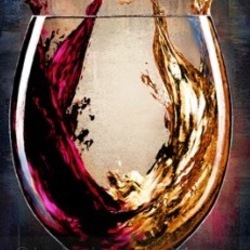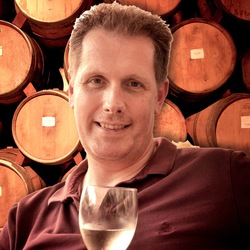Château Giscours
Le Haut-Médoc de Giscours
Haut-Médoc Red Bordeaux Blend 2018
I liked it. Fun to drink. Better than others. Bought at Enoteca for ¥4,000. — 2 years ago
Chateau de Cots
Cuvée Tradition Cotes de Bourg Red Bordeaux Blend 2016
2016 vintage . Château de Côts Cuvée Prestige, Côtes de Bourg. This is a Malbec-dominated blend (60%), with equal parts of Cabernet Sauvignon and Merlot. Deep dark red colour ( the Malbec pleads guilty). The nose features black cherries and violets with a hint of roasted coffee beans. More power compared to the similarly-priced 2016 Haut-Medoc de Giscours tasted alongside, but maybe a little less charm at this stage. A serious tannic structure slightly obscuring the juicy fruit. This should be great with a few years of bottle ageing. Abv. 14,5% — 3 years ago
Château Giscours
Cuvée Privée Margaux Red Bordeaux Blend 2010
A solid, sexy claret. It is drinking beautifully now. — 8 years ago
Le Haut-Médoc de Giscours
Grande Réserve Haut-Médoc Red Bordeaux Blend 2019
Nice, easy drinking, medium depth gage. — 19 days ago
Château Giscours
La Sirène de Giscours Margaux Red Bordeaux Blend 2015
La Sirène de Giscours – Margaux 2015
Margaux, Bordeaux, France 🇫🇷
Overview
Second label of the prestigious 3rd Growth Château Giscours, this cuvée shows how even secondary bottlings from classified estates can age with grace. The 2015 blend is 65% Cabernet Sauvignon, 30% Merlot, and 5% Cabernet Franc, delivering structure, elegance, and finesse in perfect harmony.
Aromas & Flavors
Vivid layers of ripe blackcurrant, raspberry, and plum glide alongside subtle cedar, tobacco, and floral spice. Delicate hints of earth and minerality frame the fruit beautifully.
Mouthfeel
Medium-bodied with polished tannins, silky texture, and a seamless balance between freshness and maturity. The finish is long, refined, and quietly powerful.
Food Pairing
Versatile with roast lamb, duck breast, or aged Comté. It also complements charcuterie or hard cheeses in a more casual setting.
Verdict
An elegant Margaux that proves second labels are no afterthought. Still very much alive, refined, and balanced—an absolute pleasure to drink.
🍷 Personal Pick Highlight
This wine reinforces my belief that second labels can often surprise and delight. The finesse and silkiness here rival many first labels—proof that patience rewards and that Margaux elegance never fails. — 3 months ago
Château Brane-Cantenac
Grand Cru Classé en 1855 Margaux Red Bordeaux Blend 2005
I have a six-pack of this 05. I thought after 10 years in bottle, it would be interesting to check in on its evolution. While tasty, I’ll wait another 8-10 to open another. Even after 2-3 hours in the decanter, it’s still a very young adolescent. On the nose, slightly sour blackberries & dark cherries, dark currants, baked black plum, haunting blue fruits, anise, whiff of spice, steeped tea, dry stones, dry crushed rocks with dry top soil, caramel, vanilla with fresh & dry red florals. The body is thick & full. Tannins are starting to round out. It’s velvety on the palate. The fruits are; bright, fresh & ripe and really show the greatness of the 05 vintage. Dark currants, blackberries, dark cherries, baked black plum, haunting blue fruits, baked strawberries, cherries, raspberries on the long set, dark spice, clay & loamy dry top soil with crushed rocks, dry stones, cigar with ash, graphite, dry stems, slight herbaceous character, mint, used leather, clove, caramel, vanilla, fresh & dry red florals with violets. The round acidity is about perfect. The structure and length are still strong. The balance is in harmony. As for the long finish, it’s lush, ruby, rich and well polished. Photos of; Chateau Brane Cantenac, large wood vats, Henri Lurton and Estate vines. Producer notes and history...Chateau Brane Cantenac began in the early 17th century. At the time, the estate was known as Domaine Guilhem Hosten. Even that far back, wine was produced from the property. In fact, the wine was so highly regarded it was one of the more expensive wines in Bordeaux. It sold for almost as much money as Brane Mouton. This is interesting because of who went on to buy the vineyard in the 1800’s. The Baron of Brane, also known as “Napoleon of the Vineyards”, purchased the Chateau in 1833. At the time of the sale, the estate was called Chateau Gorce-Guy. To get the funds needed to purchase the Margaux vineyard, the Baron sold what is now called Mouton Rothschild, which was at the time of the sale, known as Chateau Brane-Mouton. Not such a good move with hundreds of years in hindsight! In 1838, the Baron renamed property taking his name and the name of the sector where the vineyards were located and called it Chateau Brane Cantenac. The Chateau later passed to the Roy family, who were well-known in the Margaux appellation in those days, as they owned Chateau d’issan. Moving ahead to 1920, the Societe des Grands Crus de France, a group of merchants and growers that owned several chateaux located in the Medoc including; Chateau Margaux, Chateau Giscours, and Chateau Lagrange in St. Julien, purchased Chateau Brane Cantenac. Five years later, M. Recapet and his son-in-law, François Lurton, took over Brane Cantenac along with Chateau Margaux. Lucien Lurton (the son of François Lurton) inherited Brane Cantenac in 1956. Today, the estate is still in the hands of the Lurton family. Brane Cantenac is owned and run by Henri Lurton. After being given the responsibility of managing Brane Cantenac, it was under the direction of Henri Lurton that large portions of the vineyard were replanted. Vine densities were increased, the drainage systems were improved and the plantings were also, slowly changed. The vineyard of Brane Cantenac is planted to 55% Cabernet Sauvignon, 40% Merlot, 4.5% Cabernet Franc and .5% Carmenere. Carmenere was used for the first time in the 2011 vintage. The only other Chateau I know that still uses Carmenere is Clerc Milon. The 75 hectare Left Bank vineyard of Brane Cantenac is essentially unchanged since it earned Second Growth status in the 1855 Classification. At least that is the case with the 45 hectares used to produce the Grand Vin of Brane Cantenac. Those 45 hectares are planted surrounding the Chateau. Those vines are located just in front of the Cantenac plateau and are the best terroir that Brane Cantenac owns. They have other parcels, which are further inland and much of those grapes are placed into their second wine, Le Baron de Brane. Those additional hectares can be divided into 3 main sections. Behind the Chateau, they have 15 hectares of vines on gravel and sand, 10 hectares across the road with sand, gravel and iron and a 13 hectare parcel with gravel called Notton, which is used for their second wine. The vineyard is planted to a vine density that ranges from 6,666 vines per hectare on the plateau and up to 8,000 vines per hectare for the vines located behind chateau, in their sandier soils. The higher levels of vine density are always found in the newer plantings. The terroir of Brane Cantenac consists of deep gravel, sand and clay soil. Experiments in the vineyards are currently looking at becoming more organic in their vineyard management. Today, more than 25% of Brane Cantenac is farmed using organic farming techniques. It is expected that over time, the amount of hectares farmed with organic methods will be increased. Brane Cantenac has gone through 2 relatively recent modernization’s in 1999, when they added began adding the first of their smaller vats to allow for parcel by parcel vinification and then again in 2015 when they completed a much more complete renovation of their cellars and vat rooms. While Brane Cantenac is a traditional producer, they are no stranger to technology as they were one of the first estates to embrace optical grape sorting machines. In very wet vintages, they can also use reverse osmosis. To produce the wine of Chateau Brane Cantenac, the wine is vinified in a combination of temperature controlled, traditional, 22 oak vats, 18 concrete tanks and 20 stainless steel vats that vary in size from 40 hectoliters all the way up to 200 hectoliters, which allows for parcel by parcel vinification. 40% of the fermentation takes place in the oak vats. The oldest vines are vinified in vats that are selected to allow for separate parcel by parcel vinification. The younger vines are vinified more often together in the same vats. However, the Carmenere is entirely micro-vinified, meaning that those grapes were completely vinified in barrel, using micro-vinification techniques. This can also happen because the amount of grapes produced is so small. Some vats can be co-inoculated, meaning they go through alcoholic fermentation and malolactic fermentation simultaneously. At Chateau Brane Cantenac, malolactic fermentation takes place in a combination of French oak tanks and barrels. The wine of Brane Cantenac is aged in an average of 60% new, French oak barrels for 18 months before bottling. The initial 2 months of aging is done with the wine on its lees, which adds more depth to the wine. There second wine is Le Baron de Brane. Le Baron de Brane is not new. In fact, previously, the second wine went under the name of Chateau Notton, which took its name from one of the main parcels where the grapes were planted. During the late 1950’s and into the 1960’s, having a second wine was important as the estate declassified 3 vintages, due to extremely poor, weather conditions in 1956, 1960 and 1963. Production of Chateau Brane Cantenac is about 11,000 cases per year. — 8 years ago

Château du Tertre
Margaux Red Bordeaux Blend 2018
Château du Tertre, Red Blend – 2018
AOC Margaux – Bordeaux, France 🇫🇷
5th Growth, Grand Cru Classé en 1855
Overview
A historic Margaux estate, Château du Tertre sits on a prominent gravel “tertre” (hillock) that gives the château its name. The 2018 vintage was a warm and generous year, producing wines with depth, richness, and polished tannins. The estate’s blend for the V.18 crafted Cabernet Sauvignon 40%, Merlot 30%, Cabernet Franc 25%, and Petit Verdot 5%, delivering the quintessential Margaux elegance.
Aromas & Flavors
Blackcurrant, blackberry, and ripe plum layered with graphite, cedar, and cigar box. Hints of violets, licorice, and cocoa weave through the bouquet, adding complexity.
Mouthfeel
Elegant yet bold: medium to full-bodied with polished and structured tannins, a silky mid-palate, and a long, harmonious finish. A wine showing its prime with youthful vibrancy and well-integrated oak.
Food Pairings
Roast lamb with herbs, beef Wellington, duck breast, Truffle risotto, porcini pasta, mushroom burgers, aged Gruyère, Manchego, or Brie de Meaux.
Verdict
The 2018 vintage is a standout for Margaux, and Château du Tertre shines with a balance of power and finesse. Dark-fruited, silky, and aromatic, this wine embodies the elegance that Margaux is celebrated for, approachable now, yet cellar-worthy for another decade.
Did You Know?
Château du Tertre shares historical ties with Château Giscours (also in Margaux), once under the same ownership. Its elevated gravel terroir provides excellent drainage, making it ideal for Cabernet Sauvignon’s deep root systems.
🍷 Personal Pick Highlight: For me, the 2018 du Tertre is the sweet spot, Margaux elegance meets ripe, modern Bordeaux style, without sacrificing finesse and within a reasonable price point. Cheers! — 2 months ago
Château Siran
Margaux Red Bordeaux Blend 2016
2016 vintage. While this estate has been in the hands of the same family since 1858, it is under the reigns of current owner Eduard Miailhe that Siran is showing its true potential. The vineyards are situated in Labarde, the Southern part of the Margaux appellation, surrounded by Crus Classés Dauzac, Prieuré- Lichine and Giscours. 2016 was the first vintage made by oenologist Marjolaine Defrance, with Hubert de Boüard (Château Angélus) as consultant since 2014. It's a blend of 46% Cabernet Sauvignon, 44% Merlot, 9% Petit Verdot and 1% Cabernet Franc, aged for 12 months in French barriques (35% new). Obviously it's way too young to show its full potential, but it is a terrific effort, undoubtedly at Cru Classé level. Concentrated black fruit (cassis, cherries, blackberries), violets, licorice and a subtle touch of cedar wood. It displays classic Margaux elegance, complexity, impeccable balance and considerable length. At only 28 euros this is one of the finest values in Margaux that should drink well over the next 20 to 30 years. — 5 years ago
Caiarossa
Pergolaia Toscana Sangiovese Blend 2006
I was quite happy with this super duper Tuscan. Quite, as it aged with grace and sophistication.
Pergolaia is harvested by hand in September from their Podere Serra all’olio and Podere Nocolino vineyards. Big, bombastic and mature flavors of plum, cherry, leather and cedar really shine in this smooth blend of mostly Sangiovese (with a small percentage of Cab Franc, Cab Sauv and Merlot. Elegant and well balanced drinking in every way, I'd say.
Owned by the Chateau Giscours and Chateau du Tertre guy. — 8 years ago







Jack Krawczyk
blueberry with a hint of fresh cuban cigar on the finish — 10 days ago